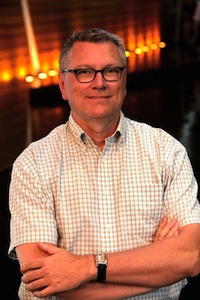 |
Plenary Speakers |
No Program Is an Island: Policy Contexts for Immersion Education |
Linguistic and Cultural Pluralism as a Guide for Daily Decision-Making |
How Fluent Should One Really Be: Controlling Against the ‘Contamination’ of the Language |
Integrated Learning Across the Immersion Curriculum |
A Vygotskian Sociocultural Perspective on Immersion Education |
Immersion 2012: Bridging Contexts for a Multilingual World
Plenary Speaker

Integrated Language Learning Across the Immersion Curriculum
Increasingly, many researchers recommend moving away from discouraging L1 use in L2 classrooms, based on the premise that L2 learners benefit from drawing on all available cognitive resources, including their primary language. Yet, if exposure to meaningful input and opportunities to use the target language are still requisite for promoting L2 acquisition, then teachers in dual language programs need to ensure such exposure and opportunities in each target language (e.g., English in English class; Spanish in Spanish class). So how can teachers encourage students to draw on their knowledge of one language while developing a sense of the linguistic and contextual integrity of both languages? One answer to this question—to be explored in this talk—lies in biliteracy tasks collaboratively designed by partner teachers to begin in one language and to continue in the other.
This talk will present a series of professional development initiatives designed to cross borders between English and French classrooms in the Montreal area. The English and French teachers of the same groups of students collaborated to plan thematic units based on illustrated storybooks read in both languages. Whereas English and French each remained the language of communication in their respective classrooms, borders between languages (and classrooms) were crossed in the thematic units co-designed by teachers with a view to enhancing students’ morphological awareness across languages.

Roy Lyster is Professor of Second Language Education in the Department of Integrated Studies Education at McGill University in Canada. He has a PhD in Applied Linguistics as well as a B.Ed. and M.Ed. from the University of Toronto, and an MA from the Université de Paris VII. His research examines content-based second language learning and the effects of instructional interventions designed to counterbalance form-focused and content-based approaches. His research interests also include professional development and teacher collaboration among language teachers for integrated language learning and biliteracy development. He was co-president then president of the Canadian Association of Applied Linguistics from 2004 to 2008 and serves on the Advisory Committees of Studies in Second Language Acquisition and The Canadian Modern Language Review and on the Editorial Board of The Journal of Immersion and Content-Based Language Education. He is author of Learning and Teaching Languages Through Content: A Counterbalanced Approach, published by Benjamins in 2007.


